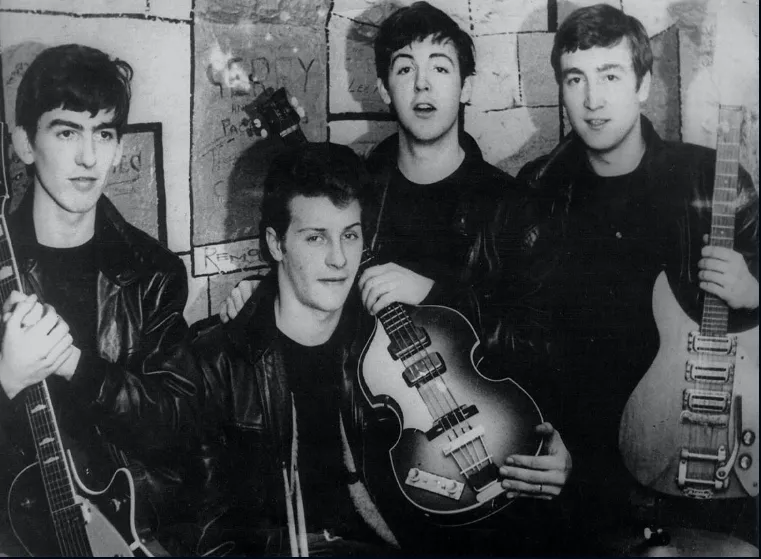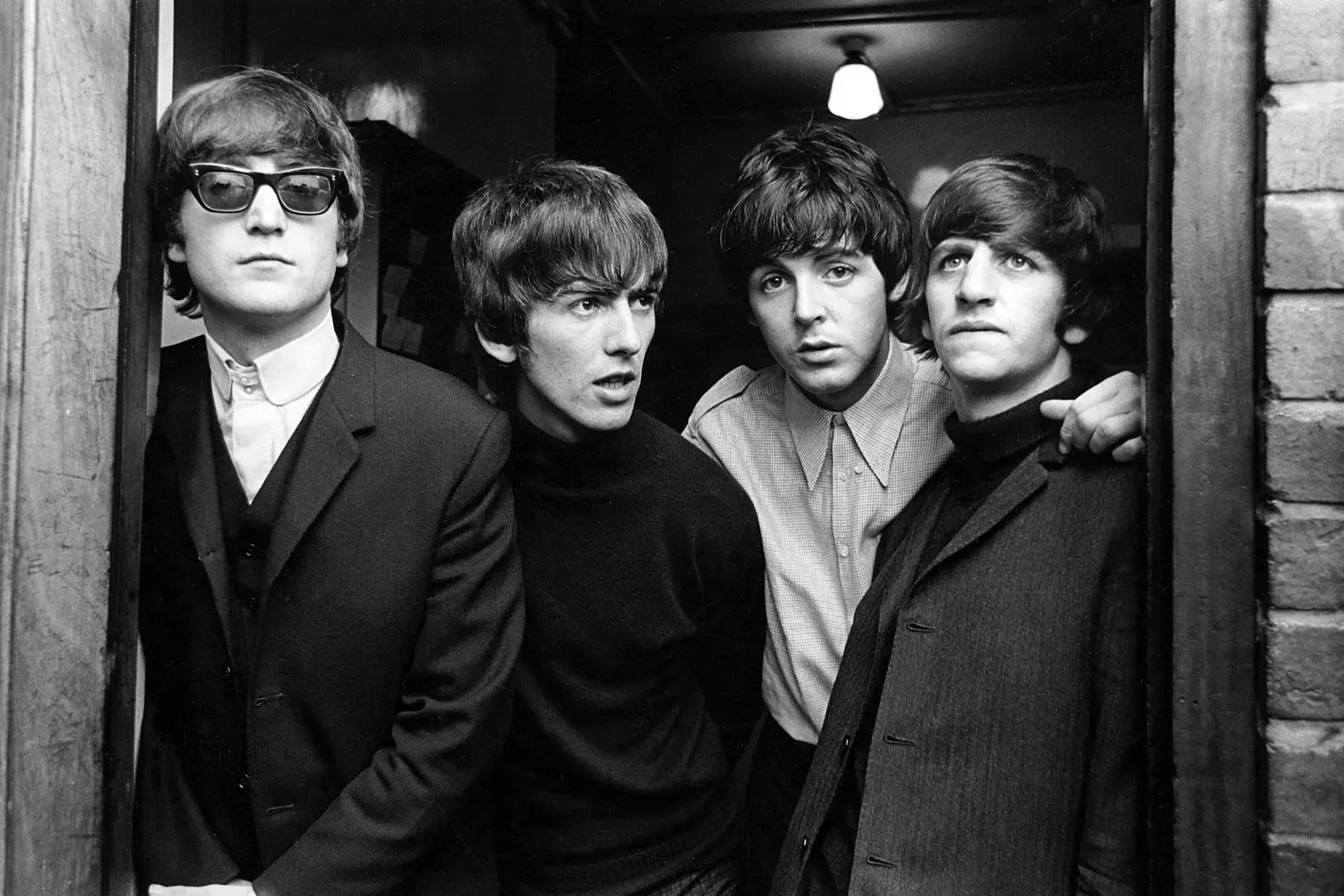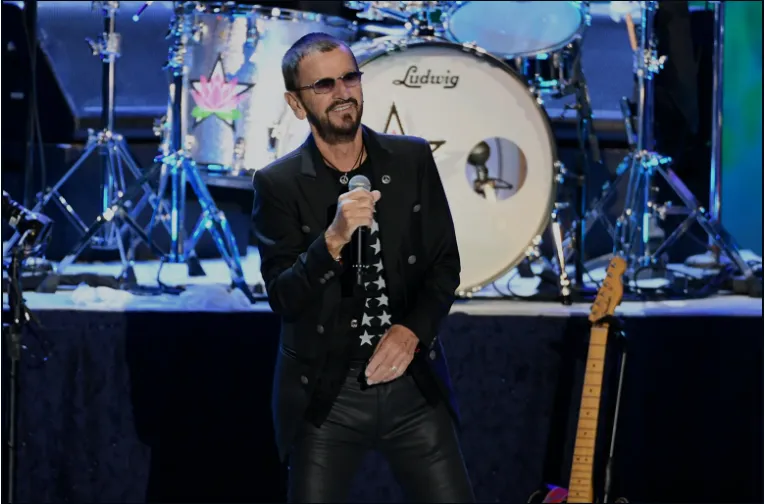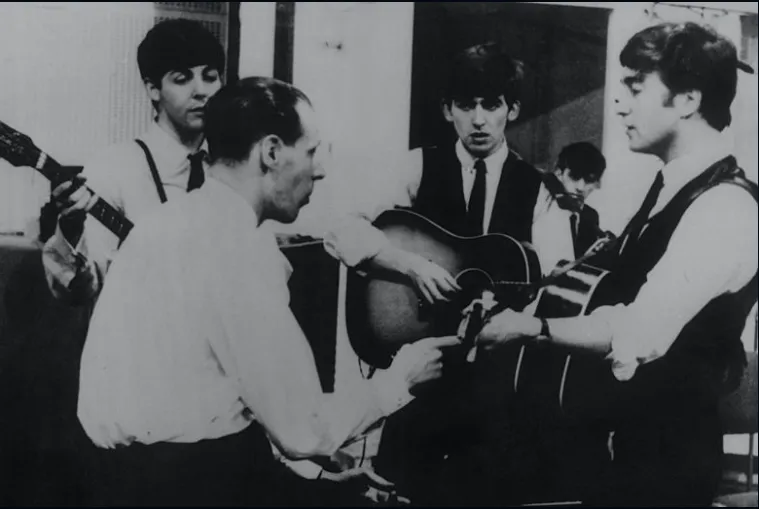The Beatles are more than just a band—they are a cultural phenomenon, an unstoppable musical force that forever changed the landscape of rock and roll.
One of the most fascinating projects in their illustrious career is the album Get Back, and the subsequent film project that encapsulates the making of this revered piece.
A Return to Roots: The Genesis of "Get Back"

In the late 1960s, The Beatles found themselves at a crossroads. Having ventured into increasingly complex studio productions with albums like Sgt. Pepper's Lonely Hearts Club Band and The White Album, the Fab Four were yearning for a return to simpler times.
They decided to strip down their sound and get back to their rock roots, a concept that would become the heart of the Get Back project.
The idea was simple: to record an album live, without overdubs, as they used to before the era of elaborate studio techniques.
This was part of their plan to reconnect with each other as musicians and to recapture the raw energy and camaraderie that had characterized their early years.
Twists and Turns: The Recording Process
In January 1969, The Beatles gathered at Twickenham Film Studios to begin rehearsals and recording sessions.
The intention was to film the entire process, capturing both the musical performances and the interactions among the band members. The journey was far from smooth, as underlying tensions and personal differences began to surface.
John Lennon, Paul McCartney, George Harrison, and Ringo Starr were grappling with the pressures of fame, differing creative visions, and personal lives pulling them in various directions.
Despite the challenges, the sessions produced some remarkable moments. Songs like "Get Back," "Don't Let Me Down," and "Two of Us" began to take shape, capturing the raw spirit they sought to revive.
George Harrison’s brief departure from the group during the sessions was a significant turning point.
His frustration reflected the broader struggles within the band. Yet, his return marked a recommitment to the project, and the band relocated to their own Apple Studio to continue recording.
The Rooftop Concert: A Defining Moment

One of the most iconic moments of the Get Back sessions was the rooftop concert on January 30, 1969.
The Beatles took to the rooftop of the Apple Corps building in London for an impromptu performance—their first live concert in over two years. The concert, though unplanned, became legendary, showcasing the band’s unparalleled synergy and musical prowess.
As they performed tracks like "Get Back," "Don't Let Me Down," and "I’ve Got a Feeling," the live setting infused the songs with an electrifying energy that resonated with the audience below and has continued to captivate fans for generations.
The rooftop concert was a triumphant reminder of The Beatles' unmatched ability to connect with their listeners live, even amidst internal struggles.
The Transition to "Let It Be"
Originally conceived as a back-to-basics album titled Get Back, the project underwent numerous changes before its release.
After the initial sessions, the recordings sat unfinished until producer Phil Spector was brought in to "salvage" the project. Spector’s approach included adding orchestral overdubs, which significantly altered the raw, live sound that The Beatles had originally envisioned.
When the album was finally released in May 1970, it was given the title Let It Be. The accompanying film, also titled Let It Be, offered an intimate look at the sessions' highs and lows.
While the final album bore less resemblance to the original Get Back concept, it nonetheless contained many of the tracks that had evolved during those January sessions.
Personal Reflections: The Jervis Family Connection
For the Jervis Family, The Beatles have always been a cornerstone of our musical life. My parents, avid fans since their youth, have passed down their love for The Beatles to us.
The story of Get Back is particularly special to our family, as it symbolizes both the trials and triumphs of creativity and collaboration.
One of the most memorable moments I shared with my parents was watching the Let It Be film together. Seeing The Beatles at their most candid—joking, arguing, and creating—offered a glimpse into their human side, making their music even more relatable and profound. My father would often reminisce about the first time he listened to "Get Back" in his friend’s basement, describing it as a raw, unfiltered return to the joyous simplicity of rock and roll.
The Legacy of "Get Back"

Over the decades, The Beatles' Get Back sessions have continued to inspire musicians and fans alike.
The rawness and authenticity captured during this period serve as a testament to the band's enduring ability to innovate and connect on a deeply human level. The sessions marked an essential chapter in their history, laying the foundation for their final studio album.
In recent years, renewed interest in the Get Back project has led to exciting developments. The upcoming documentary series, directed by Peter Jackson, is set to offer an in-depth look at the original sessions, using hours of previously unseen footage.
This highly anticipated release promises to shed new light on The Beatles' creative process, the dynamics within the band, and the iconic rooftop concert.
The Unseen Influence of "Get Back"
Beyond its immediate impact, the Get Back sessions have held an almost mythic status in popular culture.
They represent a moment when the greatest band in the world sought to return to their roots, even as they were transitioning toward their eventual breakup.
The authenticity captured during these sessions has inspired countless artists to prioritize raw emotion and genuine connection in their work.
The lessons from The Beatles' Get Back go beyond music; they serve as a reminder of the importance of perseverance and the value of reconnecting with one's core passion, even amid adversity.
For The Beatles, the Get Back project was a journey of rediscovery, ultimately yielding a treasure trove of timeless music that continues to resonate today.
New Perspectives: Peter Jackson’s Documentary
Peter Jackson's upcoming documentary, also titled Get Back, promises to offer fresh insights into this fascinating period. Utilizing state-of-the-art restoration techniques, Jackson aims to present the sessions in a new light, emphasizing the creativity and camaraderie that flourished amid the tension.
The project is anticipated to redefine our understanding of The Beatles' Get Back, portraying the band not just as icons, but as individuals navigating the complexities of collaboration and artistry.
"Get Back" to the Essence of The Beatles
The journey of The Beatles' Get Back album is a complex, multi-faceted tale of creativity, conflict, and camaraderie. It captures The Beatles at a crucial juncture, seeking to return to their roots while pushing the boundaries of their art.
This period, with its raw authenticity and genuine emotion, highlights the band's enduring allure and unparalleled talent.



